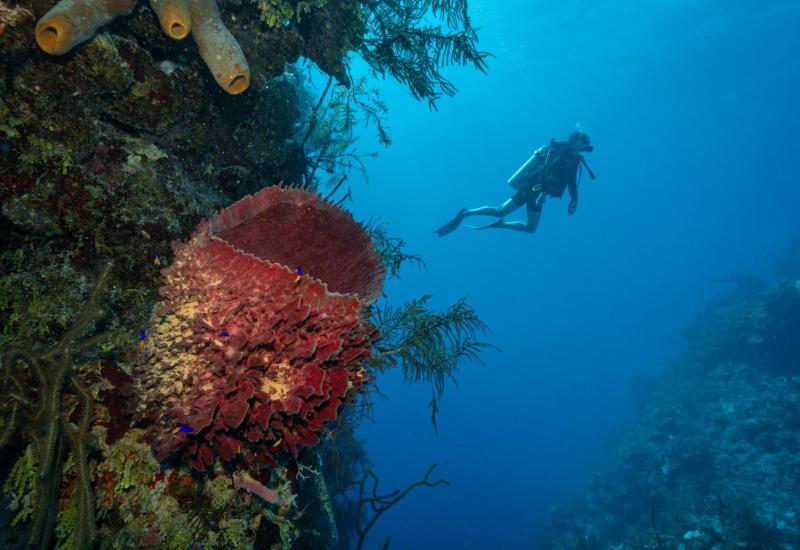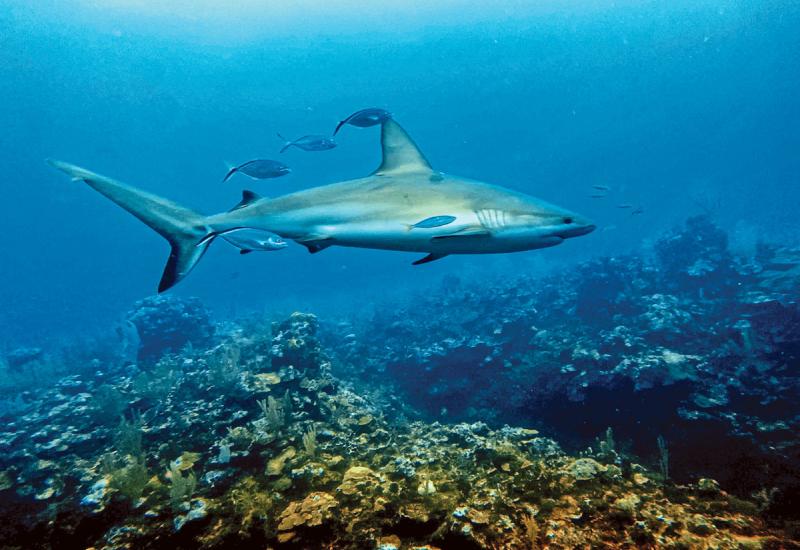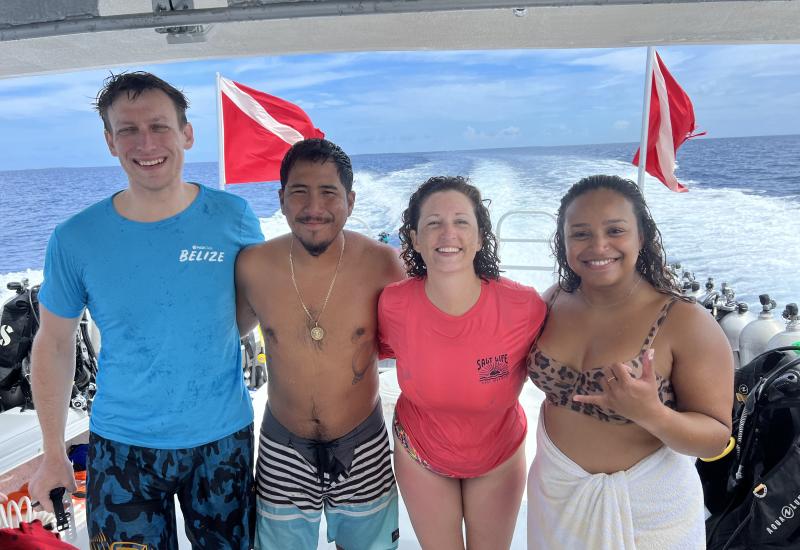The Blue Hole, Belize
When viewed from above, the Blue Hole seems almost too precise to be believed. In the middle of the Lighthouse Reef system, the almost perfectly circular formation looks man-made, like some navigational hub for ancient Maya fliers. Formed by the collapse of a series of caves and caverns, the Blue Hole, more than 300 feet across and about 480 feet deep, is the largest underwater sinkhole in the world. Its cousins on land are called cenotes. Eons ago, during the Pleistocene era and the Earth's last ice age, the Blue Hole was actually above sea level. During this period, rainwater that seeped through the porous limestone formed huge stalactites, and the mineral deposits grew to the massive proportions divers see today. Of course, the ice eventually melted, and the structure was filled with seawater.
When you descend into the Blue Hole, the sheer walls drop plumb in a thrilling free-fall until you get to about 100-110 feet. At this depth, the wall actually slopes back to reveal colonies of regal stalactites, some more than 25 feet long, at about 130 feet. The water in the Blue Hole, like the air in caves, remains almost constant in temperature, about 77°F, and visibility generally exceeds 150 feet. The water is almost perfectly still, lending the Blue Hole a mysterious aura. Sometimes, if you peer into the deep gloom of the abyss, you might catch a glimpse of a reef shark or a hammerhead lolling about among the stalactites, but there's not much marine life within the hole because of the low water exchange and the lack of light. In fact, the bottom of the hole (don't even think about going there without some serious technical training) is virtually devoid of oxygen. On this dive, it's all about primordial geology.
A descent into the Blue Hole is an unforgettable experience. And finning around and among these geologic giants, deep in the blue Earth, makes one realize just how lucky we are as divers to be able to experience such unique majesty. Several PADI operations service the Blue Hole, both out of Ambergris Caye or Belize City (check out www.padi.com). Peter Hughes' Sun Dancer II (www.peterhughes.com) and the Belize Aggressor III (www.aggressor.com) both include this underwater wonder in their weekly itineraries.










